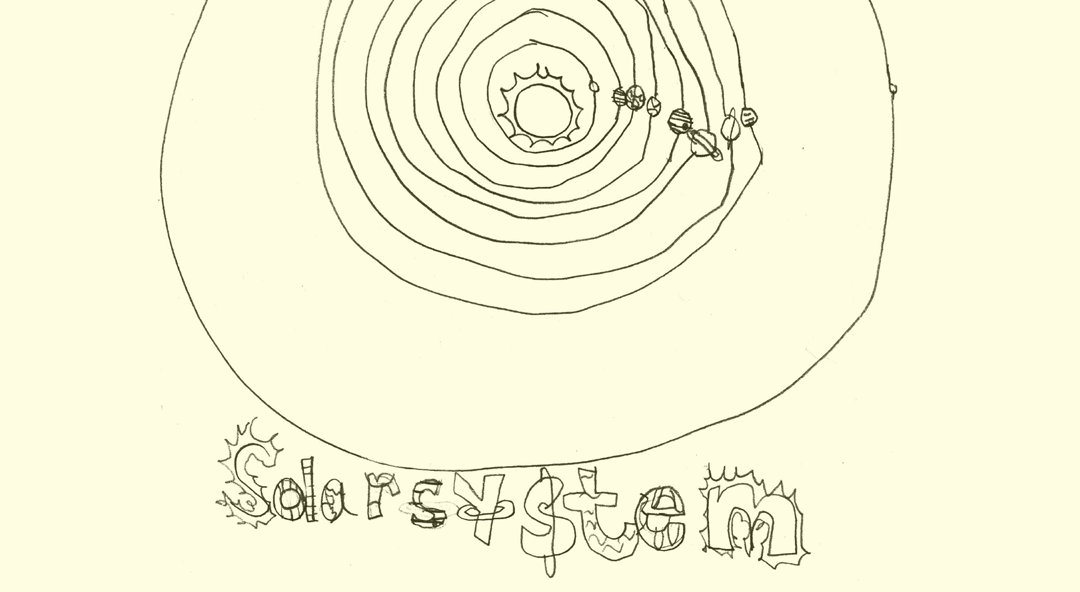The Teachers & Writers Magazine editorial board selected Dani Kopoulos’ “Here Papi Catch” as the 2023 Bechtel Prize runner up. The Bechtel Prize is awarded for an essay describing a creative writing teaching experience, project, or activity that demonstrates innovation in creative writing instruction.
The Bechtel Prize is named for Louise Seaman Bechtel, who was an editor, author, collector of children’s books, and teacher. She was the first person to head a juvenile book department at an American publishing house. As such, she took children’s literature seriously, helped establish the field, and was a tireless advocate for the importance of literature in kids’ lives.This award honors her legacy. Learn more about the Bechtel Prize here.
I often wonder about the fate of the mind’s eye. In a world where young people have an infinite supply of images in their pockets, where they’re surrounded by pixels in every direction, is there even still a need to conjure pictures? Can the mind’s eye lie dormant, waiting to be opened?
The teacher in Room 209 told me she would like to work on character descriptions. She thinks the students are having a hard time visualizing the characters in the story. An important part of comprehension is visualizing, but she’s worried that, for whatever reason, they aren’t doing it. Is there anything I could do to help?
This is my third visit out of six to this seventh-grade class. I am a teaching artist in Jersey City, using drama-based strategies to approach language arts learning. I tell her I’ll do my best.
In a world where young people have an infinite supply of images in their pockets, where they’re surrounded by pixels in every direction, is there even still a need to conjure pictures?
We start by making a chart on the board at the front of the room describing physical characteristics. I ask the students what kinds of things we mention when we’re describing someone? We make columns of categories—height, weight, clothes, facial features, etc.—and add many descriptive words beneath each one. Tall! Wavy hair! Blue sweatpants! Thick eyebrows! White sneakers! Students yell out words as we brainstorm what might be used to describe a person’s appearance.
I step back and tell everyone to have a look at our chart. They filled it up! I tell them to just look it over for a minute and roll the words around in their minds. Then, without saying why, I go over and turn off the lights. The raucous shouts and exclamations turn into murmurs and oooohs throughout the class.
The room is shady and quiet. No more buzz and glare of the fluorescent lights, no more hum and glow of the smartboard, just an unlikely but pleasant peace that has settled over the room. I ask the students to rest their heads on their arms on the desks. Kids look around at each other to see who’s gonna do it, trying to decide if they should or not. They’re surprised by my request—are they in trouble?—but once they see I’m not mad, one by one they gladly comply, as most of them sorely lack proper sleep. I can hear a few deep exhales as they settle in. One or two are reluctant to close their eyes. That’s OK. They eventually will. I feel their tensions from the daily chaos ease, and I feel their trust build—a silent, comforting energy that surrounds all of us. The strangeness of this situation—at rest, heads down, lights off, with no trace of stress or blame—allows them to relax, be privately curious, and wait for what’s next. I walk around the room slowly, talking softly and giving instructions.
As I roam among them, I tell them I am going to take them on a journey into their own brains. I tell them that, believe it or not, their brains are bigger than the most sophisticated supercomputer. That they hold thousands or millions or trillions of files and memories and that each of them is like a tiny movie. I tell them I’m going to take them on a journey into their own hard drives and find a movie that I know is in there.
I ask them to picture someone they’re close to. I leave it up to them to define what that means. Could be family, friend, neighbor, man at the corner store.
I tell them I’m going to ask them questions but that they are not to answer the questions aloud. Rather, they should ask those questions to their own brain and see how the brain replies.
In almost a whisper, I take them through the items we wrote on the chart. Zoom in on this person. What are they wearing? Clothes, shoes, accessories? What is their height, body type, hair color?
I walk around the room, speaking softly, hypnotically, to the backs of heads on desks. Up one row, down the other. I can almost feel their memories unfolding into images.
Now that you’ve seen their physical appearance, what is their personality like? What kind of vibe are they giving off? How do they make you feel?
I pause a bit, give them time to search, to identify a feeling.
What are they doing? Where is this taking place?
Now, when you can really feel them there, their appearance, their personality, what they’re doing—imagine they look up at you and say something.
What do they say?
Another pause. Silence in the room. Delicious, reflective silence. Heads down, nothing moves.
I can almost feel their memories unfolding into images.
After half a minute or so, I tell them to slowly and quietly open their eyes, sit up, and come back to the world. I ask them to not say a word so as not to break the spell. (And everyone can feel it—it is a spell.) They are to silently pick up their pencil and write on the paper that’s been pre-set on their desk ONLY the sentence that was spoken to them. They are to put the sentence in quotation marks.
Then they are to skip a line or two. Then they will start the description of their person.
Pencils get to work. No one hesitates. In this class that moans every time writing is mentioned, everyone’s focused and writing hard. They are conjuring pictures and capturing them in words. I circulate, reading over their shoulders, reminding them of the categories—What color was the T-shirt? How long is her hair? Is he quiet or outgoing?
Wait. It turns out not everyone is focused.
Every time I pass Luis, he is fidgeting. Folding and unfolding his paper, getting up to sharpen his pencil, looking in his desk for something. Disrupting others who are writing. Every time I pass, I say, Luis, start simple. Did you decide on someone? “Yes. Yep. Mmhmm.” But nothing goes on the paper. Finally, the third time around, he sets me straight. “I can’t write. I just can’t. Ask the teacher, she’ll tell you.” He yells across the room, “Right, Ms. Sherman? I can’t write. She knows. I just don’t write.”
Hmmm. . . . OK. Well, that’s all right because you don’t have to write your own words. Luis is puzzled. I tell him, Just write down the words that your person said to you. You know, in the little movie you had in your head. Hoping I’ll go away, he reaches for his pencil and noncommittally writes down “here papi catch.” The pencil rolls off the desk, and he doesn’t stop it. It hits the floor. He’s done with this.
I sure would like to know just a little bit what your person looks like. Just start with what he’s wearing. . . . You know, in the picture you had in your imagination. What’s he wearing? Luis picks his pencil up, scrunches up his face, then, just to humor me, scrawls on the paper, “Red trunks.” He folds it sloppily, puts it in the desk, and gets out of his seat to go smack a classmate a few rows over. I said, Oooh, that’s interesting! Luis looks back at me like I’m crazy. Where on earth was he that he was wearing red trunks? I ask. Luis considers this, comes back, and unfolds his crumpled paper. He jots down a few more words.
I consider this a success and move on. I try to stop my mind from thinking about what will become of Luis and the many, many similarly ill-equipped yet pushed-ahead students like him I see throughout the school year.
As the students finish their pieces, I walk around the room collecting them. Luis keeps saying, “Wait, wait!” So I stall a bit and talk to a few kids. Soon it’s clear that everyone is waiting on him, so I tell him he’s got to finish up. He ignores me and keeps writing.
I bring a chair to the front of the room and sit in it with the pile of papers I’ve collected. Protests all around: Nooooooo! Don’t read mine!!! I introduce them to the word “anonymous” and promise I will not reveal the identity of the writer. They are skeptical but seem satisfied. I pull randomly from the pile of papers and start reading aloud. The kids are mesmerized hearing their own words come out of someone else’s mouth.
They hear themselves being capable, being descriptive, bringing a character to life, bringing love to blank paper.
Grandpa sitting in church in a beige Egyptian robe, sandals, and gold cross, with a fringe of white hair, whispers, “I’m so proud of you.”
Abuelita in a pink housedress stirring a pot over the stove, says, “Mija, don’t forget to put a plate for your brother!”
A best friend with a brown ponytail, in a dark blue school uniform, calls over her shoulder, “Call me tonight after volleyball practice!”
They saw them, they heard them—characters made their ways from the hearts of the young writers to their minds’ eyes. And out the tips of their pencils and pens.
After I read a few, it’s almost time to go. Luis finally runs up and sticks his paper in the pile in my hand. “Can you do mine? Pleeeease?” Before I can answer that there’s no time left, he snatches the paper back and says, “No, can I read mine myself? Pleeeeease??”
I’m trying to think fast—what’s the best thing? Everyone else was anonymous. Should I let him read his own? What if he embarrasses himself and is mocked by all? That would confirm his low self-esteem about his writing.
I quickly assess the class and figure it’s not a particularly bloodthirsty group (as middle schoolers go). I looked at his enthusiastic face and warily stepped aside for him to take the spotlight.
He held his paper in front of him, and read:
here papi catch
he is wearing red trunks.
he is standing knee deep in the ocean, and the waves are hitting his legs.
the sun light is bright and I can see drops of water glowing on his chest hairs.
the light hits his gold cross.
he is throwing me a ball.
we are at the beach.
we went to the beach altogether.
he takes me to do stuff and cares for me.
I thank God every day for bringing this good man into my mother’s life.
The room is quiet. And then, all at once, the whole class starts clapping. Luis smiles, incredulous, humble, without fidgeting, and lets it soak in. He glances at Ms. Sherman, who nods. He keeps standing there, clutching his fold-marked paper tightly in his hand.
Read the 2023 Bechtel Prize winner: “You Must Change Your Life: Demystifying and Remystifying Poetry in the Classroom” by William Camponovo.
Read the 2023 Bechtel Prize honorable mention: “Is That a Rock?: Erasure as Empowerment in the Middle School Classroom” by Jenna Lanzaro.

Dani Kopoulos
Dani Kopoulos is an award-winning writer and performance artist living in the New York area. She holds a BFA from The School of the Art Institute of Chicago and an MFA from The New School. As a teaching artist, she has led drama, writing, and creativity workshops for children and adults in Chicago, New York, Newark, and Jersey City for over 20 years. She loves facilitating journeys to meaningful connections and to the deeply creative inner voice.



